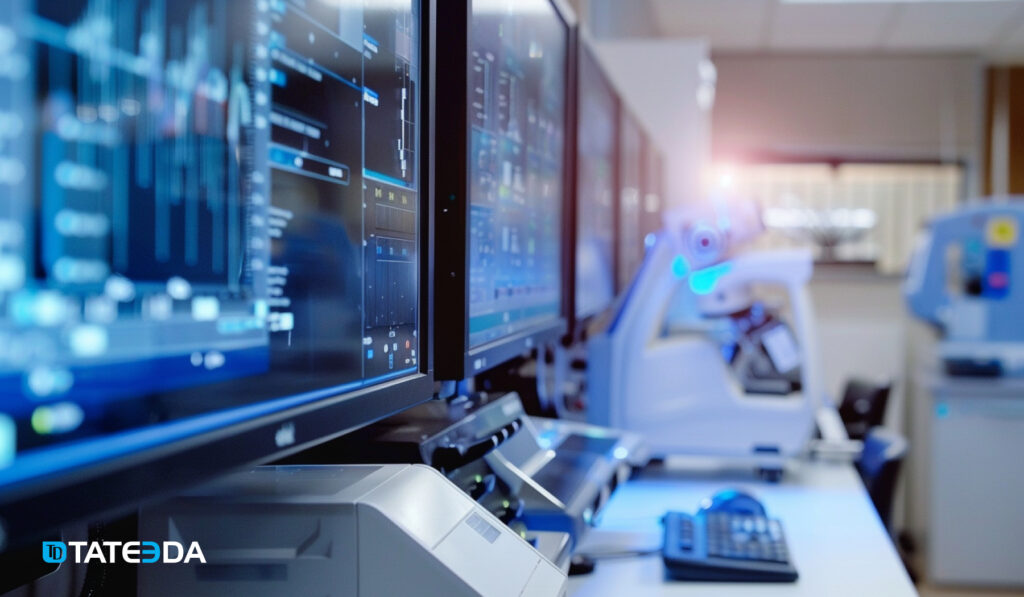America has always been a hub of innovation, pushing the boundaries of what’s possible. American Labs From the light bulb to the internet, U.S. labs have shaped the modern world. Today, American researchers are working on groundbreaking technologies that could transform our lives in the coming decades. Here’s a look at the top five future technologies emerging from American labs, explained in simple terms to spark your curiosity.

1. Quantum Computing: The Next Leap in Processing Power
Imagine a computer so powerful it can solve problems in seconds that would take today’s supercomputers millions of years. That’s the promise of quantum computing, and American labs are leading the charge. Companies like IBM, Google, and startups like Rigetti Computing are building quantum computers that use the strange rules of quantum physics to process information in entirely new ways.
Unlike regular computers that use bits (zeros or ones), quantum computers use qubits, which can be both zero and one at the same time. This allows them to tackle complex tasks, like designing new medicines, optimizing global supply chains, or cracking encryption codes. Google’s quantum team in California made headlines when they claimed their Sycamore processor achieved “quantum supremacy” by performing a calculation in 200 seconds that would take a traditional supercomputer 10,000 years.
While quantum computers are still in their early stages, American labs are racing to make them practical. In the next 10-20 years, they could revolutionize industries, from healthcare to finance. The challenge? Keeping qubits stable and scaling up the tech. But with billions in funding and top talent, the U.S. is well-positioned to dominate this field.

2. Artificial Intelligence That Thinks Like Humans
Artificial intelligence (AI) is already changing how we live, from voice assistants to self-driving cars. But American labs are taking AI to the next level, creating systems that can reason, learn, and adapt like humans. Research hubs like Stanford, MIT, and companies like OpenAI and xAI are developing AI that can understand context, solve abstract problems, and even generate creative ideas.
One exciting area is “general AI,” which aims to create machines that aren’t limited to specific tasks. For example, xAI, based in Texas, is working on AI to accelerate human scientific discovery, helping researchers solve mysteries of the universe. Meanwhile, labs at Carnegie Mellon are improving AI’s ability to understand language and visuals, making it better at tasks like diagnosing diseases from medical scans or writing realistic stories.
The impact? Smarter AI could transform education, automate complex jobs, and even help fight climate change by modeling solutions. But there’s a flip side: ethical concerns about privacy and job displacement. American researchers are also studying how to make AI safe and transparent, ensuring it benefits everyone.
3. Fusion Energy: Clean Power for the Future
What if we could power the world with the same energy that fuels the sun? Fusion energy, which combines atomic nuclei to release massive amounts of energy, could be the answer. Unlike fossil fuels, fusion produces no greenhouse gases, and unlike nuclear fission, it creates minimal radioactive waste. American labs, including MIT, Lawrence Livermore National Laboratory, and private firms like Commonwealth Fusion Systems, are making huge strides.
In 2022, Livermore’s National Ignition Facility achieved a historic breakthrough, producing more energy from a fusion reaction than was used to start it. While we’re still years away from commercial fusion power plants, this milestone proved it’s possible. MIT’s SPARC project, backed by billions in investment, aims to build a compact fusion reactor by the early 2030s.

Fusion could provide nearly limitless clean energy, reducing our reliance on coal, oil, and gas. It’s a game-changer for tackling climate change and powering future cities. The challenge is cost and complexity, but American ingenuity is closing the gap, making fusion a real possibility within our lifetime.
4. Advanced Gene Editing: Rewriting the Code of Life
Gene editing is like a pair of molecular scissors, letting scientists cut and paste DNA to fix diseases or enhance traits. The CRISPR-Cas9 system, co-invented by American scientist Jennifer Doudna, has already revolutionized biology. Now, labs across the U.S., from Harvard to the Broad Institute, are pushing gene editing even further.
One exciting development is curing genetic diseases. In clinical trials, CRISPR has been used to treat sickle cell anemia and certain types of blindness. Researchers are also exploring ways to edit genes to prevent diseases like cancer or Alzheimer’s before they start. Beyond medicine, American labs are using gene editing to create drought-resistant crops and even revive extinct species, like the passenger pigeon.
The potential is staggering, but so are the ethical questions. Could gene editing lead to “designer babies” or widen social inequalities? U.S. scientists are working with policymakers to set guidelines, ensuring this tech is used responsibly. For now, gene editing is one of the most promising tools to improve human health and the environment.
5. Space Exploration Tech: Reaching for the Stars
America’s space ambitions are soaring, thanks to cutting-edge tech from NASA, SpaceX, and university labs. From reusable rockets to advanced propulsion systems, U.S. innovations are making space more accessible and exciting. NASA’s Jet Propulsion Laboratory in California is developing tech for missions to Mars, including rovers that can search for signs of life and drones that fly through alien skies.
SpaceX, founded by Elon Musk, is revolutionizing space travel with reusable rockets like the Starship, designed to carry humans to Mars and beyond. Meanwhile, labs at Caltech and MIT are working on propulsion systems, like ion thrusters and laser sails, that could make interstellar travel a reality. These systems use less fuel and could reach distant stars in decades, not centuries.
Space tech isn’t just about exploration. Satellites developed in American labs are improving weather forecasting, global communication, and even farming. The challenge is cost and international competition, but the U.S. remains a leader, inspiring a new generation to look to the stars.
Why These Technologies Matter
These five technologies—quantum computing, advanced AI, fusion energy, gene editing, and space exploration—represent the cutting edge of human progress. Born in American labs, they have the potential to solve some of the world’s biggest problems, from climate change to disease to resource scarcity. They also show the power of collaboration between universities, government, and private companies.
But with great power comes great responsibility. These technologies raise tough questions about ethics, access, and safety. American researchers are tackling these challenges head-on, aiming to create a future where innovation benefits everyone, not just a select few.
As these technologies develop, they’ll create new jobs, spark economic growth, and redefine what’s possible. The work happening in U.S. labs today could shape the world for generations. It’s an exciting time, and America’s spirit of discovery is leading the way.
Also Read:- 10 High-Paying Side Hustles for US Residents in 2025





